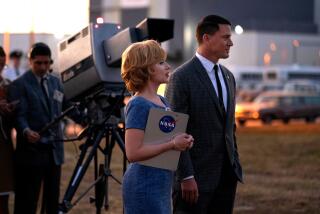Julian Scheer, 75; NASA Publicist
- Share via
WASHINGTON — Julian Scheer, who in the 1960s and early ‘70s helped craft the U.S. space program’s public relations effort by getting astronauts out of their flight suits and into the public consciousness as avatars of the American “can-do” spirit, has died. He was 75.
Scheer died Saturday at his home in Catlett, Va., where he had lived since 1965. He had a heart attack while riding a tractor on his farm.
As the assistant administrator of public affairs for the National Aeronautics and Space Administration from 1962 to 1971, Scheer played a major role in crafting the ceremony and symbolism of the Apollo 11 moon landing in 1969 and received criticism for NASA’s handling of information after the fire that killed three Apollo 1 crew members in 1967.
“The [space] program was really a battle in the Cold War, and Julian Scheer was one of its generals,” Frank Borman, an Apollo 8 astronaut, said in an interview Sunday.
After the successful moon landing in 1969, Scheer was a proponent of exploiting the historic accomplishment’s public relations potential.
“The Apollo 11 mission was the chance to show off U.S. technological superiority. Clearly the Russians were going to the moon. We were head to head. We emphasized that,” he wrote in a 1999 article for USA Today.
Julian Weisel Scheer was a native of Richmond, Va., and wrote for newspapers there as a young man.
He served in the merchant marine during World War II, in the Atlantic and Pacific. He was a graduate of the University of North Carolina at Chapel Hill.
He got to know Robert F. Kennedy while covering the 1960 presidential campaign for the Charlotte News, and was asked by Kennedy in 1962 to create an organizational framework for NASA’s public relations program.
Established NASA spokesmen such as John “Shorty” Powers and Paul Haney were more familiar to the public. But under Scheer, according to a NASA history, other voices began to be heard, including those of technicians and other flight crew members.
With the backing of NASA Administrator James Webb, Scheer informed astronauts that they would have to make themselves available to the media beyond an orchestrated news conference or two.
“He understood the needs of the media and also the needs of the NASA flight crews. He was, in many cases, able to accommodate both,” said Apollo 11 astronaut Neil Armstrong. “He did some prodding in both directions.”
After the first moon landing, Scheer accompanied the three astronauts, including Armstrong, the first man on the moon, on the triumphal “Giant Step” trip to 22 countries that included visits with the pope, the emperor of Japan and the queen of England.
Scheer was responsible for naming the lunar command module Columbia. He also arranged for television coverage of the landing and participated in discussions about whether the astronauts should place an American flag on the moon.
In addition, he helped craft the wording of the plaque on the landing module that was left on the moon.
It read, in part, “We Came in Peace for All Mankind.” President Richard M. Nixon had wanted to insert a mention of God. Scheer objected to the change but told a presidential aide that it was going to be made.
But, he wrote in a 1999 article for the Web site https://www.space.com, “in the rush of events, no one would remember. . . . The plaque that has been resting on the Sea of Tranquillity for 30 years is the original, without the benefit of President Nixon’s editing.”
Scheer left NASA in 1972 and served as campaign manager for North Carolina Democratic Sen. Terry Sanford’s unsuccessful presidential campaign. Scheer was later a vice president of LTV Corp., whose holdings include steel mills.
Survivors include his wife of 36 years, four children and four grandchildren.
*
Finding News Obituaries
Looking for an obituary that appeared in The Times last week? You can still find it on the Internet. Go to The Times’ Web site at https://www.latimes.com/obits.
More to Read
Sign up for Essential California
The most important California stories and recommendations in your inbox every morning.
You may occasionally receive promotional content from the Los Angeles Times.













